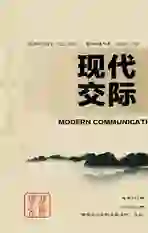对外汉语教学案例分析
2018-02-20牛红梅
牛红梅
摘要:交际能力一般是指母语交际能力或特定文化的交际能力,与特定的文化有紧密的联系。在对外汉语教学实践中,必须考虑交际者的文化背景,处理好交际中涉及的文化因素。本文旨在以一次對外汉语教学课为案例,展示对外汉语教学中的文化因素处理。
关键词:对外汉语 中国文化
中图分类号:H195 文献标识码:A 文章编号:1009-5349(2018)21-0196-02
一、案例背景
本次案例的教学对象是西澳洲一所小学三年级学生;教学目的是让澳洲小学生初步了解中国传统节日端午节的来历和习俗;并针对小学生的认知特点设计了做龙舟的环节;教学重点和难点是对端午节文化内涵的讲解。使用PPT和词语卡片等辅助教学。
二、案例描述
(一)教师导入授课内容
(1)Good morning everyone! Since we've learned some important Chinese festivals, can you memorize these festivals? ... Yes, you are so clever, we have learned Chunjie and YuanXiao jie. Today, we are going to learn another very important Chinese Festival- The Dragon Boat Festival,in Chinese we read as 端午节.
(2)PPT上显示汉字:端午节,教师领读词语,让学生朗读几遍。
(二)教师借助于PPT为学生讲解端午节的习俗
(1)教师展示PPT图片,问:What's this?
学生:I'm not sure, it's a sort of food ? ...
教师:This is called Zongzi,a traditional Chinese food, a pyramid-shaped dumpling made of glutinous rice wrapped in bamboo or reed leaves...
(2)PPT上显示汉字:粽子,教师领读词语,然后让学生朗读几遍。
(3)教师展示第二张PPT图片,问:What are they doing?
学生:They are racing on boats.
教师:Please observe the boats,have you noticed that the boats are quite different from the normal ones?
学生:Yes,this is a dragon boat on each boat.
教师:Can you tell me the reason why there is a dragon on the boat?
学生:Chinese people worship dragons!We've learned that!
教师:Good memory! Dragon boat racing is read as 赛龙舟.赛means race;龙means dragon;舟means boat.
(4)利用词语卡片,让学生进一步识记端午节、吃粽子、赛龙舟这三个词语。
(三)借助PPT图片讲述端午节的故事
(1)教师讲述故事:
The Dragon Boat Festival falls on the fifth day of the fifth lunar month. On that day, people eat Zongzi, which is a pyramid-shaped dumpling made of glutinous rice wrapped in bamboo or reed leaves and hold dragon-boat races.
Do you know why people eat Zongzi and hold dragon-boat races? It is said that these activities commemorate the great patriotic poet Qu Yuan in ancient China. There is a heart-broken story in it.
Qu lived in the State of Chu in the Warring States Period. Among the states of Qi, Chu, Yan, Han, Zhao, Wei and Qin, the State of Qin was the strongest, and it wished to annex the others to become even more powerful. Qu Yuan was a Dafu, an ancient official title. He maintained that Chu's politics should be reformed and that it should unite with the other states to resist Qin. But his stand was opposed by crafty officials, who used malicious accusations to persuade the king of Chu not to adopt the idea and to drive Qu from the capital. Despite being exiled, Qu was still concerned about the fate of the state. Later, when he heard the news that Qin had defeated the State of Chu, he was full of grief and felt that he had no power to save his motherland , so he drowned himself in the Miluo River. It was the fifth day of the fifth lunar month in 278 BC.
When people heard the news, they were very sad and rowed their boats to try to find his body, but failed. In order to keep the fish and shrimps from eating his body, people threw food into the river to feed them.From then on, each fifth day of the fifth lunar month, people would throw food into the river. Later, people used reed leaves to wrap Zongzi for this purpose. Thus the custom of eating Zongzi and staging the dragon boat race was formed.
在这个环节中,有一名学生问:Miss Niu, Why Qu Yuan committed suicide ? Life is the most important!
老师:Good question! You are right, life is the most important! But we must notice that QuYun lived in ancient times. At that time, he felt hopeless,as he had no way to save his country, so he chose to end his life. Maybe he is not brave enough, but people commemorate him just because his patriotism. Have you got it?
学生:Yep! Thanks Miss!
(2)教师为学生播放一个关于端午节的短片,以帮助学生理解其中的文化意义。
(3)回顾故事内容,教师就端午节的故事内容提问,学生回答问题。
(4)手工做龙舟。
(5)课堂总结。
三、案例分析与总结
在本次中华文化课上,教师讲解了端午节的相关知识,学生初步了解了这个传统节日,达到了预期的授课效果。教师用讲故事和让学生看短片的方法,不但可以使学生了解端午的习俗,还可以带入一段中国的历史,文化和词汇教学双丰收。这样一来,故事听完了,词也会用了,而且端午节不再是看不见摸不着的东西,而是有故事有来源的中国传统。
但在授课过程中,出现了一个小插曲,一名学生难以理解屈原结束自己生命的行为,认为屈原自杀是不对的。这是教师始料未及的,但整理一下思路就可以理解学生提出的问题:首先,教学对象是澳大利亚小学三年级的学生,他们的教育背景和认知程度都很难理解屈原的自杀行为。教师在这种情况下就要因势利导,告诉学生:在特定的历史条件下,屈原的行为是一种爱国主义行为,人们纪念的也是他的这种情结;当然,不珍视自己生命的行为是不提倡的。这样,学生就能够理解,就不会在他们幼小的心中对中华文化留下阴影。
这个案例引起了教师的思索:在对外汉语教学中,不仅要教授汉语知识,传播中华传统文化,同时,同一个文化點,针对不同水平不同阅历的学生要因材施教,使他们都能获得符合自己层面的理解。这样,学生就在理解的基础上记忆,不会产生排斥心理,学生收获的可能不仅是对文化的记忆,更多的是对待异域文化的一种理解和包容。
从具体教学案例中发现问题,深入思考,得到启示,以便于更好地指导对外汉语教学实践,更好地教授中文,传播中国传播文化。
参考文献:
[1]赵金铭.对外汉语教学盖论[M].北京:商务印刷馆,2005.
责任编辑:张蕊
